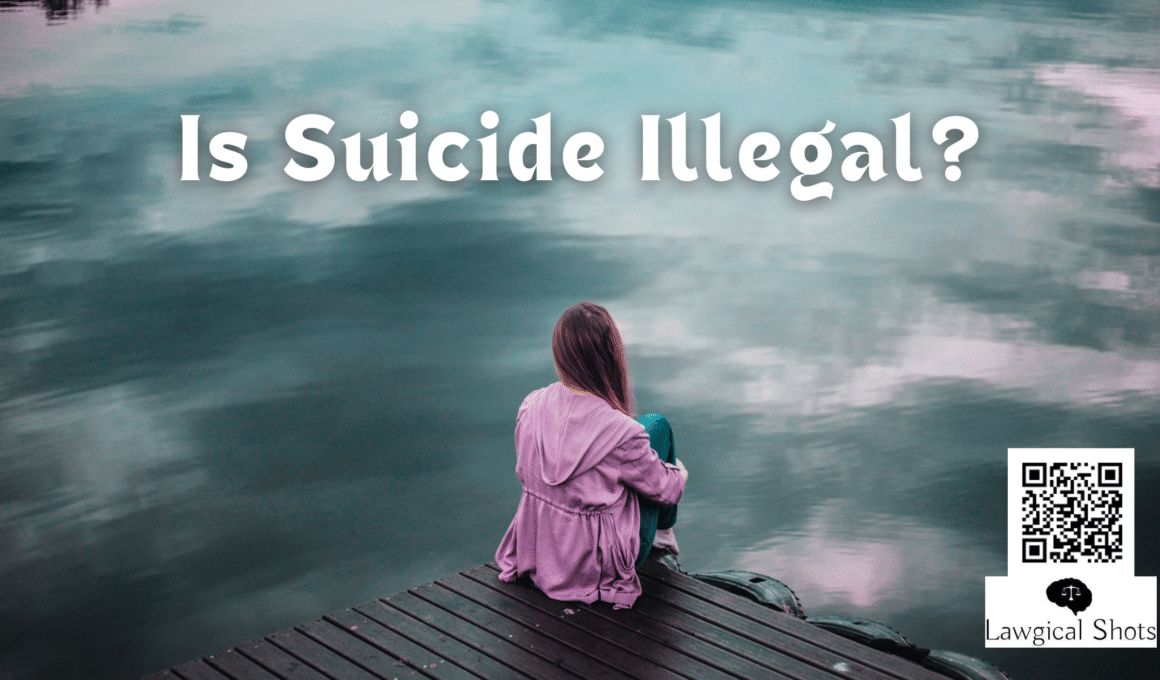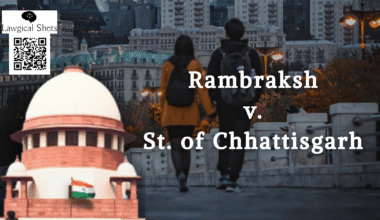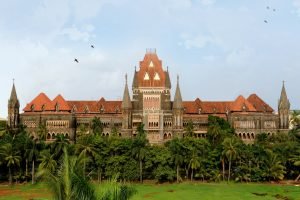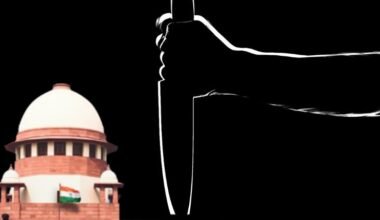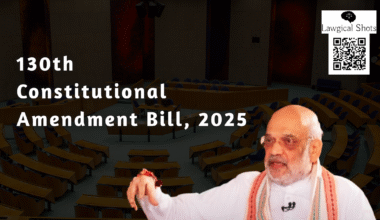“Should we use imprisonment or healing when someone feels that life has become intolerable and that death is their only option?”
This is a moral and legal issue that has affected Indian culture and the legal system for many years; it is not merely a philosophical issue. This is a very personal issue that is entangled in layers of public opinion, legislation, and policy making. Suicide is a sign of sorrow, despair, and frequently unseen suffering; it is not just an act. However, India’s legislative response to such activities was punishment rather than protection for more than 150 years.
Introduction
1,70,924 people committed suicide in 2022 alone. This frightening figure illustrates the increasing mental health epidemic. In addition to being a rise over 2021’s already high number of 1,64,033, it served as a reminder that every statistic represents a life that fell between the cracks due to social shame, illness, family obligations, or financial hardship.[i]
The old criminal laws included the Indian Penal Code, 1860, the Criminal Procedure Code, and the Indian Evidence Act, while the new criminal laws Bharatiya Nyaya Sanhita, 2023, Bharatiya Nagarik Suraksha Sanhita, 2023, and Bharatiya Sakshya Adhiniyam, 2023 came into effect on July 1, 2024.
In the past, survivors of their own suffering were labeled criminals under Section 309 of the Indian Penal Code (IPC), which punished attempted suicide. India has taken a significant legal step with the implementation of the Bharatiya Nyaya Sanhita (BNS), 2023.
However, has the nation actually decriminalized suicide or has it only changed the penalties?
In order to determine if the current legislation is more compassionate or just reworded, this article examines the legislative development from the colonial framework of the IPC to the more recent regulations under the BNS. It also looks at whether our laws have finally caught up with the physical and moral reality of suicide, as well as the conflict between human suffering and public order.
Let’s examine the past, evaluate the present, and ask ourselves if we are indeed helping or if we are still covertly punishing suffering.
IPC Section 309: A Legacy of Colonialism
The old criminal law made by the British Government in 19th Century, considered a person who committed suicide a criminal.
Section 309 of the IPC, which was passed in 1860, said:
“Whoever attempts to commit suicide and does any act towards the commission of such offence shall be punished with simple imprisonment for a term which may extend to one year, or with fine, or with both.”
The legislation wasn’t trying to find out the individual’s mental condition. Instead, it viewed someone who suffered severe psychological discomfort as a criminal.
The Constitutional Debate: The Judicial Back and Forth
India has had a difficult and occasionally very controversial legal path in its understanding of suicide. The courts have alternated between viewing it as a crime that can be punished and interpreting it as a cry for assistance from someone who is in great suffering over the years. These changes are a reflection of a significant discussion: should the law support a person’s dignity and mental health in addition to protecting life?
The State v. Sanjay Kumar Bhatia case (1985) marked a change. A young man who was experiencing emotional difficulties attempted suicide. The Delhi High Court responded humanely rather than with legal penalties. Section 309 of the Indian Penal Code, which criminalized suicide attempts, was deemed “unworthy of human society” by the court. Even though the legislation was upheld, this case brought up a crucial issue: is it appropriate to punish someone who is already going through so much hardship?
The Maruti Shripati Dubal v. State of Maharashtra case (1986) made the discussion louder. The Bombay High Court adopted a firm stance this time. The individual in question had multiple suicide attempts and mental health problems. Section 309 was declared illegal by the court. It claimed that criminalizing suicide was against the Constitution’s guarantees of equality and life. Most remarkably, the ruling said that the right to life might also entail the right to die, which was a brave and kind opinion that went against conventional wisdom.
However, the situation changed once more in 1996, only two years later. The earlier P .Rathinam v. Nagbhushan (1994) decision was reversed by a larger bench of five Supreme Court judges in the Gian Kaur v. State of Punjab case (1996). According to the judges, the right to die is not a part of the right to life. They clarified that the state has an obligation to safeguard life since it is a gift. While the court acknowledged the emotional pain behind suicide attempts, it said that legal approval of such acts could send the wrong message. Instead, appropriate medical and mental health care should be given to those who are experiencing discomfort.
The deeper tension within Indian law was shown by this back and forth between the courts. The desire to save life was on one side. The other was the realization that those who are experiencing a crisis should be treated with compassion rather than harshly. These rulings caused confusion for many. If someone survives a suicide attempt, should the police arrest them? Should medical professionals treat it as an emergency or report it as a crime? For a long time, the answer was unclear.
Mental Healthcare Act, 2017: A Step Toward Kindness
The Mental Healthcare Act of 2017 states in Section 115 that there is a presumption of extreme stress in the event of a suicide attempt. Regardless of what is stated in section 309 of the Indian Penal Code, anyone who attempts suicide is assumed to be under a lot of stress and will not be prosecuted or punished in accordance with the Code. In order to lower the probability of a suicide attempt reoccurring, the relevant government has an obligation to offer care, therapy, and rehabilitation to an individual experiencing extreme stress.
By requiring the government to offer care, therapy, and rehabilitation to individuals in need, the Mental Healthcare law changed India’s strategy from punishment to rehabilitation.
Bharatiya Nyaya Sanhita, 2023: A Legal Watershed
The BNS 2023 completely eliminates Section 309 and replaces the IPC as of July 1, 2024. But it creates a limited exception:
BNS, Section 226:
“Anyone who attempts suicide with the intention of forcing or preventing a public servant from carrying out his official duties faces a maximum sentence of one year of simple imprisonment, a fine, both, or community service.”
This implies that although general suicide attempts are no longer illegal, attempts to influence or threaten government action are nonetheless illegal.
Abetment to Suicide: Still a Crime
Under the BNS, abetment to suicide remains a serious offence:
- Section 108: General abetment is punishable with up to 10 years imprisonment and fine.
- Section 107: If the victim is a child, mentally ill, intoxicated, or otherwise vulnerable, the punishment can extend to life imprisonment or even death
Suicide in India: What the Data Shows
According to National Crime Records Bureau Report (NCRB Report) 2022:
- Total suicides: 1,70,924
- Suicide rate: 12.4 per lakh (higher in cities at 16.4)
- Leading causes: Family issues (31.7%), illness (18.4%), marriage-related issues (4.8%)
- Most common methods: Hanging (58.2%), poisoning (25.4%)
- Male to female ratio: 71.8% to 28.2%
- Education levels: Majority had education up to matric level (23.9%)[ii]
This data reveals that most suicide victims face socio-economic and emotional crises. Criminalizing them only deepens the trauma.
Challenges in Implementation
- Police Misuse of Section 309 of the IPC
Evidence indicates that police frequently still charge survivors under the criminal provision even though Section 115 of the Mental Healthcare Act, 2017 forbids prosecution under Section 309 of the IPC and presumes that anyone attempting suicide is experiencing “extreme stress.” Senior law enforcement officials have observed that police station officers commonly use Section 309 out of ignorance and insufficient training, causing needless trauma to people who are already in trouble.[iii] - Mental health care is still discouraged by social stigma.
Deeply ingrained stigma keeps many people from getting mental health help, even in the face of legislative advances. Suicide and mental illness are frequently viewed as marks of weakness or shame in Indian society. Families may choose to remain silent rather than offer support, since they are afraid of being judged. Survivors frequently experience isolation or blame, which exacerbates their illness. Access to care is guaranteed by the Mental Healthcare Act of 2017, but the true obstacle is still shifting societal perceptions. This cycle of shame and silence can only be broken by open communication, education, and awareness.
Legal Dilemma and Protest Suicides
There have been instances of people trying to protest against government policy through hunger strikes or self-immolation. Such actions are now punishable under Section 226 of the BNS. Although this upholds governmental power, the criminalization of dissent poses moral concerns.
Procedural Duty in Cases of Suicide: Section 194 of the BNSS 2023
Section 194 of the Bharatiya Nagrik Surksha Sanhita, 2023 closely follows the earlier Section 174 of the Code of Criminal Procedure. It retains the core process for how the police handle cases of suicide or any unnatural or suspicious death. The procedure involves immediate intimation to the nearest Executive Magistrate, on-site investigation in the presence of two or more respectable local residents, and preparation of a report noting injuries or visible causes of death. In certain sensitive cases, especially involving the death of a woman within seven years of marriage, the body must be sent for medical examination. Although the substance of the law remains largely the same, its inclusion in the BNSS reflects a larger shift in India’s legal landscape. It symbolizes a transition from colonial-era criminal laws to a more updated and compassionate justice system.
Conclusion
India has taken a vital step forward by removing the criminality of suicide under the Bharatiya Nyaya Sanhita, 2023. Alongside the Mental Healthcare Act, 2017, this reflects a shift from punishment to empathy. However, the gap between law and practice remains wide. Survivors are still sometimes treated as criminals due to outdated practices, lack of awareness, and deep-rooted stigma. Suicide is not a crime, it is often a cry for help. To truly honour the intent of legal reform, India must strengthen mental health services, train first responders, educate police, and start conversations that normalize seeking support. Legal change opens the door. But societal compassion must walk through it.
[i] NCRB 2022 report on Accident and Suicide https://www.ncrb.gov.in/uploads/files/AccidentalDeathsSuicidesinIndia2022v2.pdf
[ii] Ibid
[iii] https://indianexpress.com/article/explained/sec-309-ipc-questions-and-issues-around-an-archaic-section-of-the-law-6468338/
The legal standing and reforms related to the original question – “Is suicide illegal in India”, has been explained by our intern, Ms Chaitali Bhivgade. She has been assisting the team in bringing informational legal blogs.
